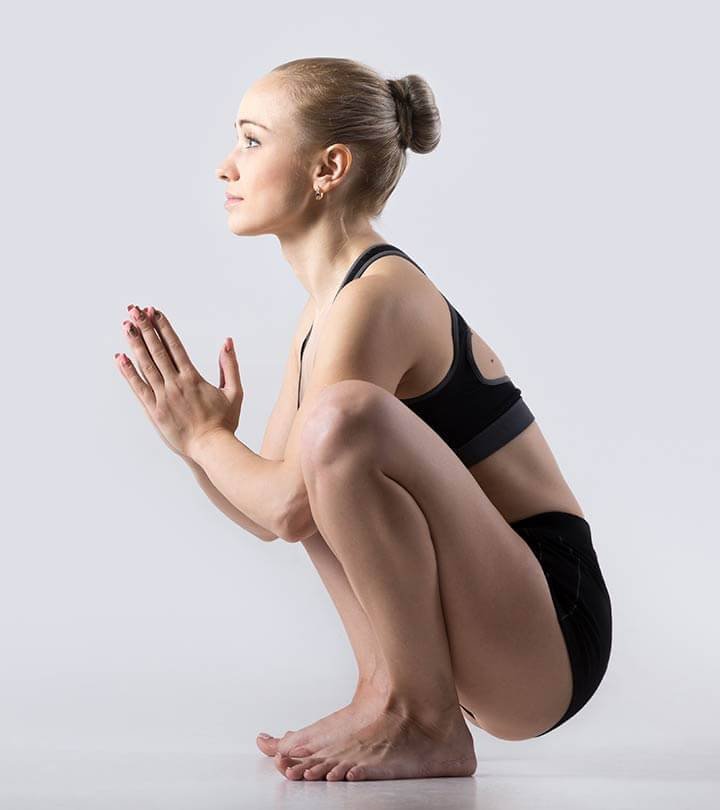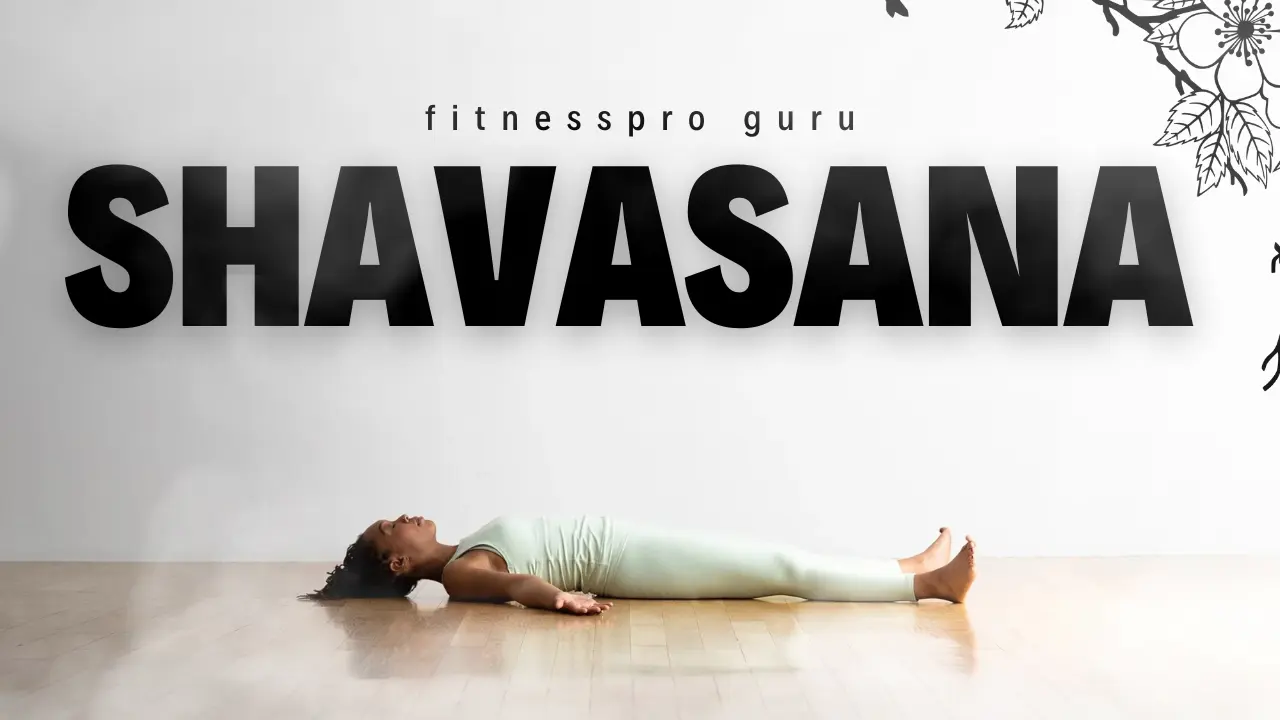“Unlocking the Benefits of Malasana (Garland Pose): Strengthen, Flex, and Find Grounding in Yoga”

Introduction
Malasana, also known as Garland Pose or Yogi Squat, is a deeply grounding yoga asana that reflects the simplicity and beauty of a garland. Rooted in the traditional Hatha yoga practice, Malasana invites practitioners to connect with the earth, cultivate flexibility, and embrace a sense of inner stillness. This pose offers numerous physical and mental benefits and is accessible to yogis of all levels. Let’s delve into the essence of Malasana and explore how this humble posture can enhance your yoga journey.
The Art of Malasana
In Malasana, the practitioner assumes a squatting position with the feet flat on the floor and the knees wide apart. The hands are brought together in a prayer position at the heart centre, symbolizing unity and balance. This gentle and introspective pose encourages us to find stability and openness in both the body and mind, just like the blossoms in a garland.
Yoga Mat with Carry Bag and Strap, 6mm Extra Thick, Ideal Exercise Mat for Yoga
Malasana, also known as Garland Pose or Yogi Squat, is a grounding yoga asana that involves squatting down with the feet flat on the floor. It’s a pose commonly found in Hatha and Vinyasa yoga sequences. Here’s a step-by-step guide on how to do Malasana:
Precautions of Malasana :
- If you have knee or hip injuries or any medical conditions, consult a yoga instructor or healthcare professional before attempting Malasana.
- For beginners, it may be helpful to practice Malasana using a yoga block or cushion under the heels for added support.
Step-by-Step Instructions:
- Starting Position:
- Begin by standing at the top of your yoga mat with your feet about hip-width apart and your arms resting alongside your body.
- Preparation for the Squat:
- Exhale as you bend your knees and lower your hips down towards the floor. Keep your feet flat on the mat.
- Squatting Position:
- Separate your feet wider than hip-width apart, with your toes pointing slightly outward.
- Bring your palms together at the heart centre in a prayer position. You can use your elbows to gently press against the inner thighs to open the hips further.
- Straightening the Spine:
- Lengthen your spine as you lift your chest upward and draw your shoulders back and down.
- Keep your core engaged to support your lower back.
- Gazing Forward:
- Direct your gaze forward, finding a focal point to maintain balance and concentration.
- Breathing Mindfully:
- Take deep breaths in and out, relaxing into the pose with each exhale.
- Holding the Pose:
- Hold for several breaths or longer, depending on your comfort level.
- Aim to stay in the pose for at least 30 seconds to one minute.
- Exiting the Pose:
- To come out of Malasana, place your hands on the floor in front of you.
- Use your hands to push into the floor as you straighten your legs and return to a standing position.
Modifications:
- If you find it challenging to keep your heels flat on the floor, you can place a folded yoga mat or a rolled-up towel under your heels for support.
- If your hips are tight, you can widen your stance further to make the pose more accessible.
“Superb Balasana: Experience Relaxation and Renewal with Child’s Pose in Yoga”
Benefits of Malasana:
1. Hip and Groin Flexibility: Malasana deeply stretches the hips, groins, and inner thighs, promoting increased flexibility and mobility in these areas.
2. Ankle Mobility and Strength: The squatting position in Malasana helps open and strengthen the ankles, improving their flexibility and stability.
3. Pelvic Floor Activation: By engaging the pelvic floor muscles in this pose, Malasana can contribute to better pelvic floor health and help prevent issues like incontinence.
4. Stimulates Digestion: The compression of the abdomen in Malasana stimulates the digestive organs, aiding digestion and promoting a healthy digestive system.
5. Natural Posture: Practicing Malasana regularly can help improve posture by opening the hips and strengthening the lower back.
6. Strengthens Lower Back and Core: The engagement of the lower back and core muscles in Malasana contributes to a stronger and more stable lower back.
7. Encourages Grounding: As a grounding pose, Malasana helps practitioners connect with the earth, fostering a sense of stability and balance.
8. Preparation for Birthing: Malasana is often recommended for pregnant individuals as it helps open the pelvic region, making it a useful pose for preparing the body for childbirth.
9. Stress Reduction: The calming and meditative qualities of Malasana can help reduce stress and anxiety, promoting a sense of relaxation.
10. Hip Opener: It is an effective hip opener, helping to release tension and stiffness in the hip joints.
11. Therapeutic for Back Pain: The gentle stretch in the lower back can provide relief for mild lower back discomfort.
12. Encourages Focus and Mindfulness: The mindful approach to Malasana fosters a deeper mind-body connection, enhancing present-moment awareness.
13. Cultivates Patience and Surrender: Embracing the squat position in Malasana teaches practitioners to cultivate patience and surrender to the present moment.
14. Strengthens the Lower Body: Malasana engages the muscles of the legs, including the quadriceps and calves, promoting strength and endurance in the lower body.
15. Energetically Balancing: It is associated with the Muladhara (Root) Chakra, which represents stability, security, and a sense of being grounded.
Conclusion
Malasana, the Garland Pose, is a beautiful and versatile yoga asana that brings numerous physical and mental benefits to practitioners. Incorporating Malasana into your yoga practice can help improve flexibility, strengthen the lower body, and promote a deeper connection with the earth. Beyond the physical aspects, it encourages mindfulness, patience, and a profound sense of groundedness in everyday life. As with any yoga pose, practice Malasana mindfully, respecting your body’s limits, and allowing yourself to fully experience the richness of this empowering pose.





